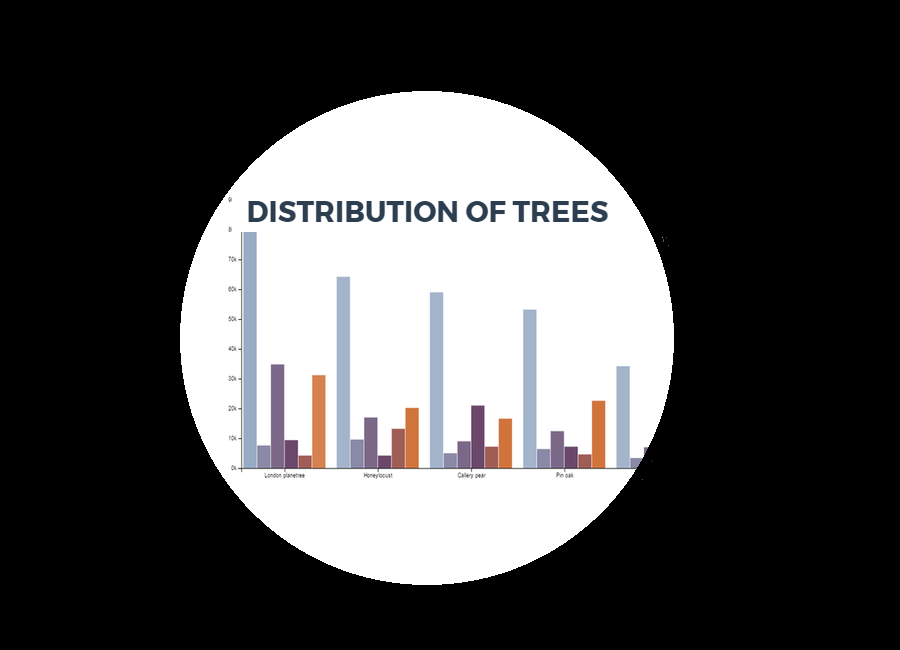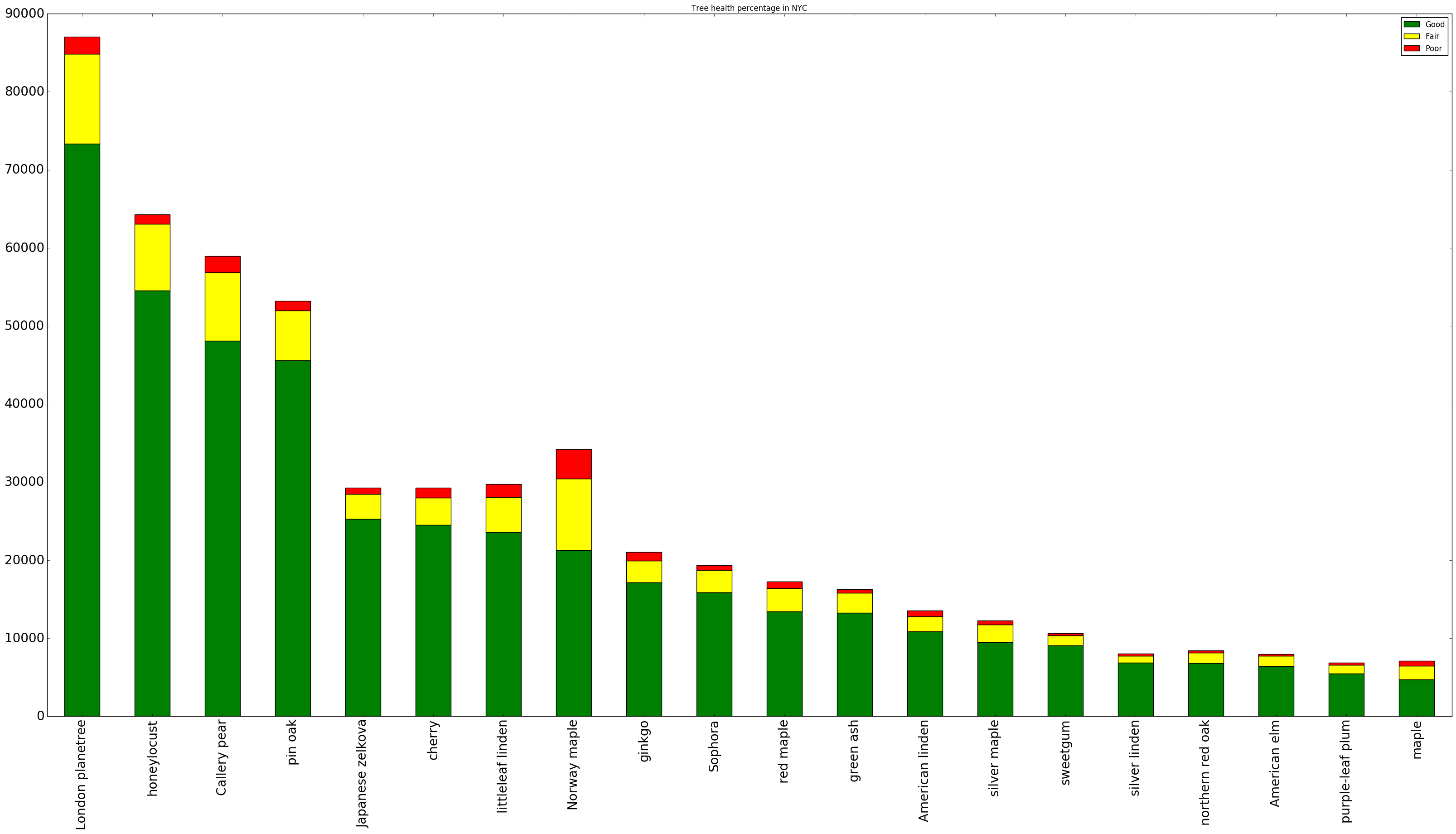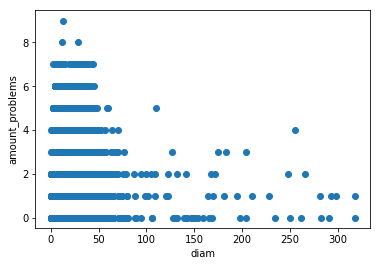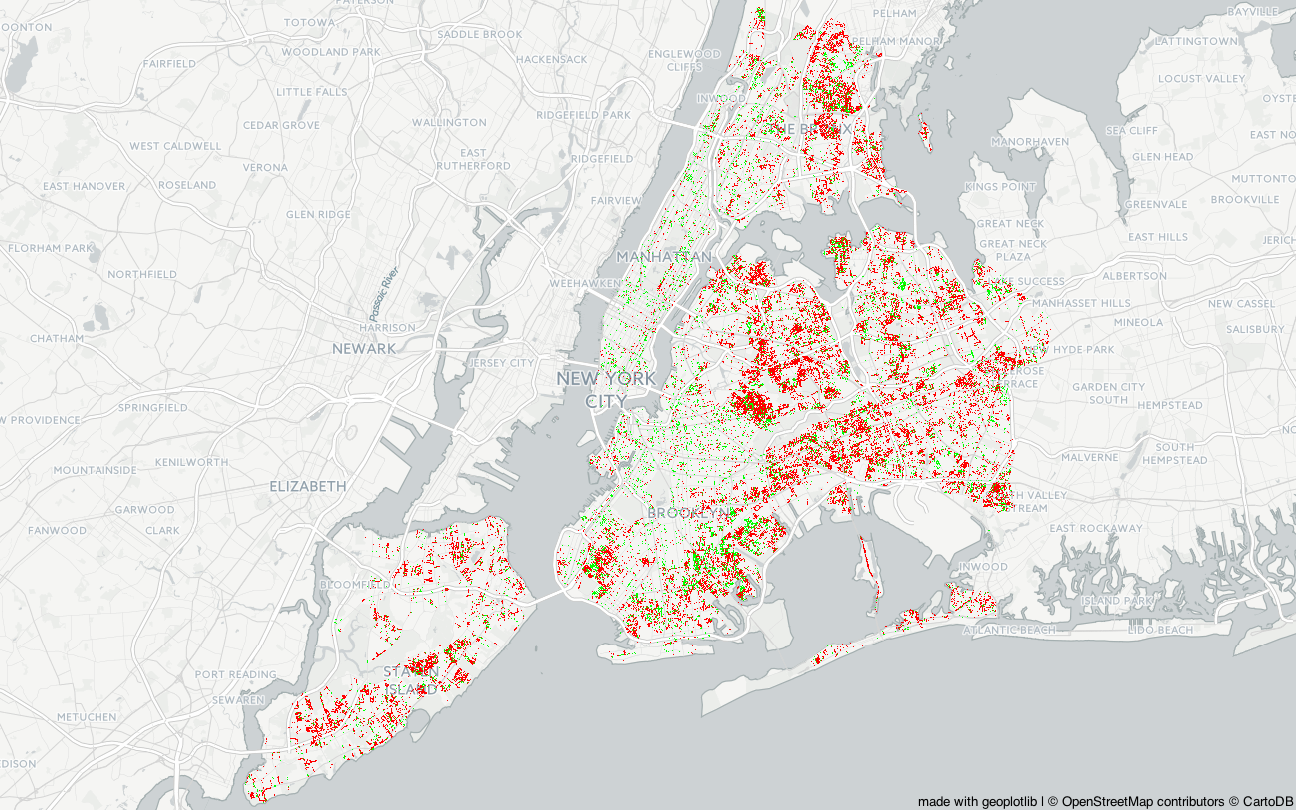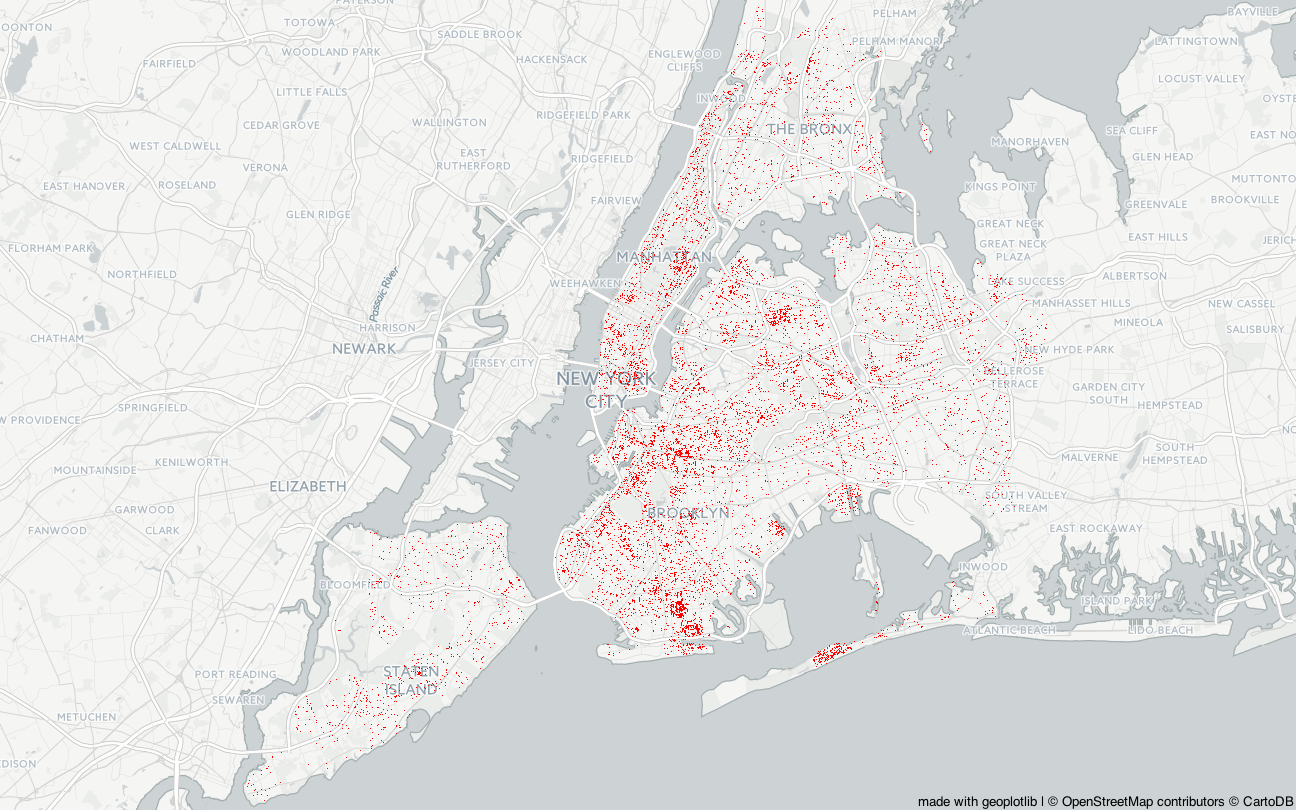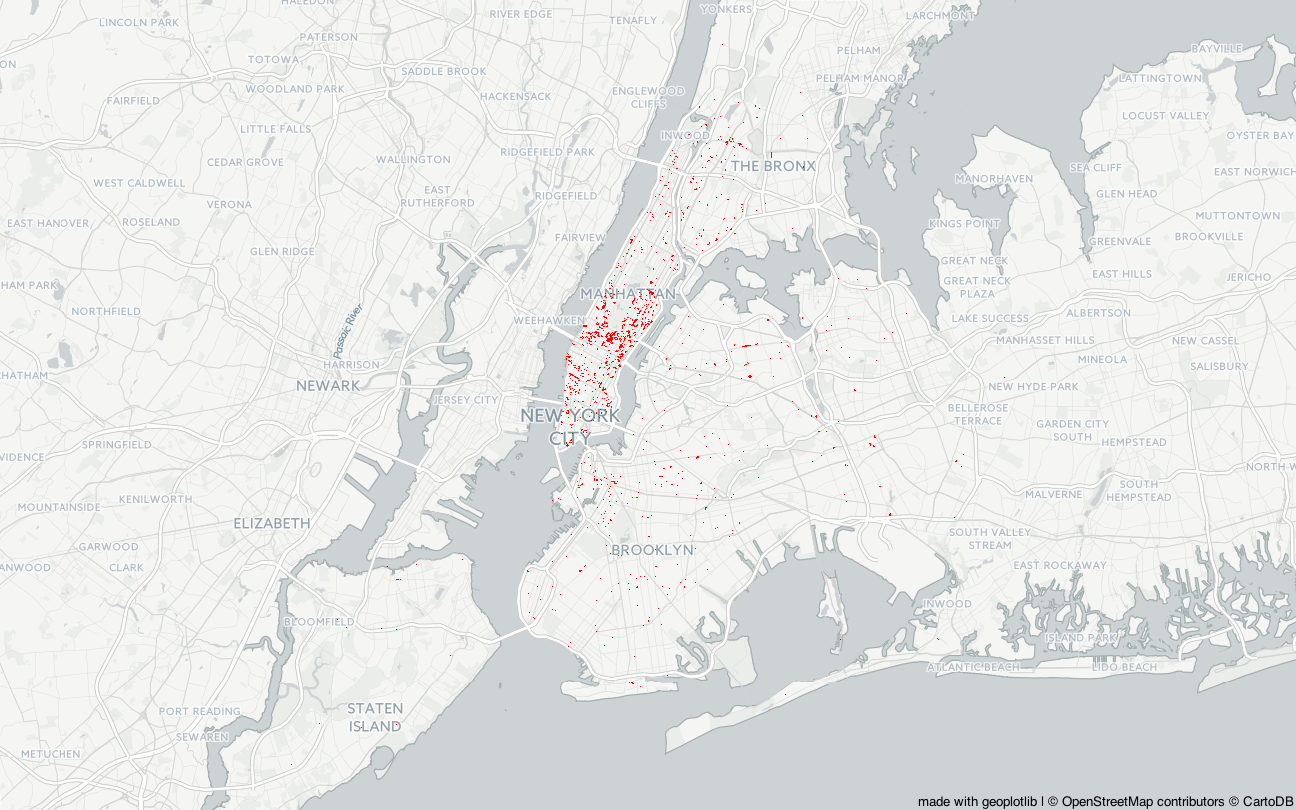Get to know the street trees of NYC
So we know that NYC is divided into 5 different boroughs. Those are then divided into 52 different community boards, which are again divided into 188 different neighborhoods. Our modified Street Tree dataset consists of 534,514 tree observations and 21 features, totalling 74.5 MB. It contains only relevant features and data for the 20 most common species. For more details about the data extraction, have a look at our notebook
By now, the clever reader might have figured out, that there's also (at least) a handful of trees in NYC. Below
is a plot of the frequency of all the different species of trees in NYC. As you can see, there is a lot of
trees in NYC, in fact, they amount to 683.788.
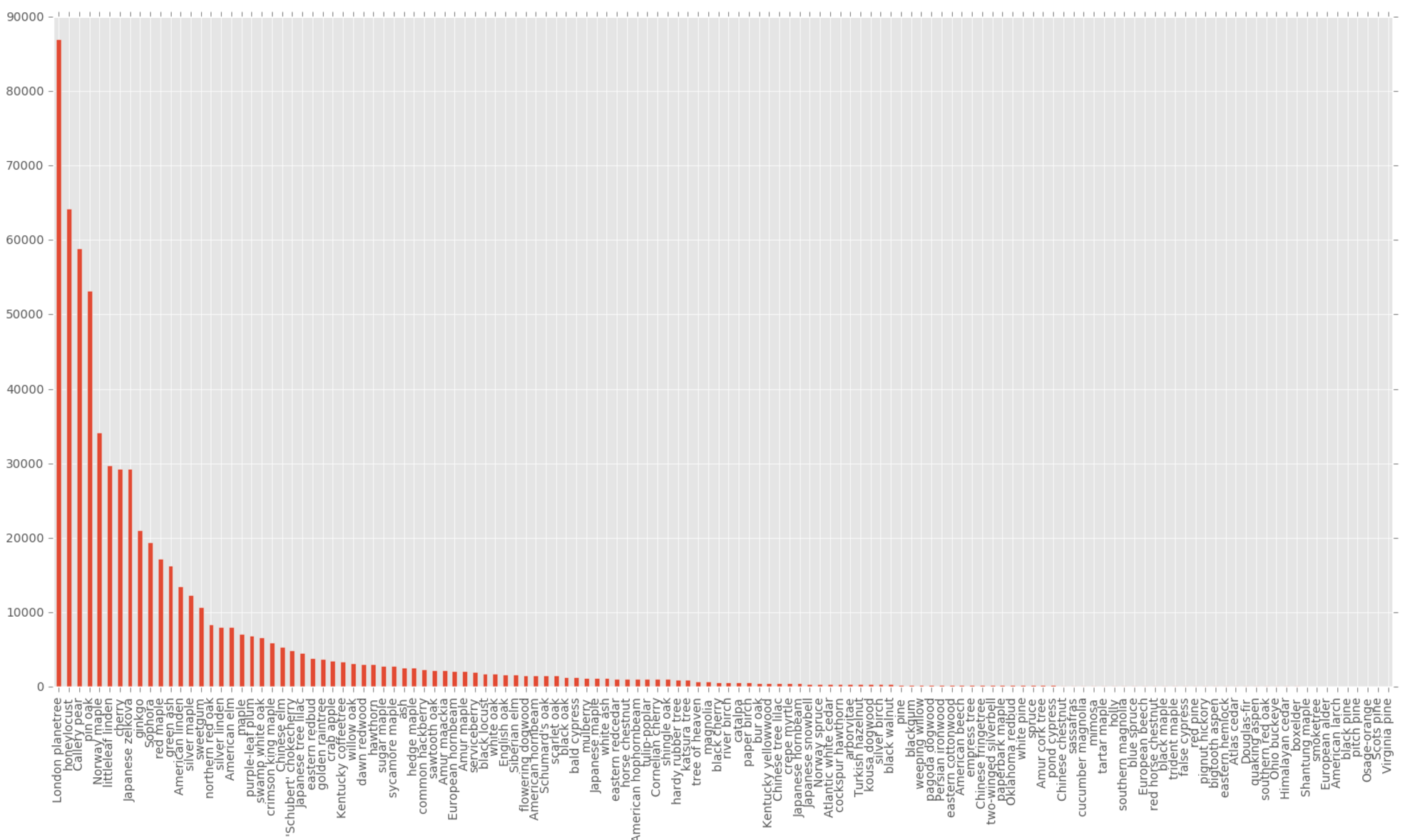
Now, let's
focus on just the 20 most common tree species. Below you find a pie chart showing the percentage distribution
of the top 20 species.
Actually, there is no reason to focus on the top 20 species. The frequency is simply becoming too small. In the following
we focus only on a smaller subset of trees.
Click the image below to get to know your top 10 trees.
Now that you have had the time to check out the most frequent species, and probably gotten to know them a little better, wouldn't it be a good time to take a closer look at how they are distributed across the different boroughs? Click the image below to see an interactive visualization of the distribution of the top 5 trees in NYC and the five boroughs.
We have also used KNN to predict the 20 most common species based on their location. From this classification, it can be derived that the same species is not necessarily planted next to each other. Details about this can also be found in the Explainer notebook.
In the three heatmaps below we can see the total distribution of all the trees. Plotting it on a heatmap like this, makes it easy to see how the amount of trees have grown a lot throughout the years in almost all areas of the city.


